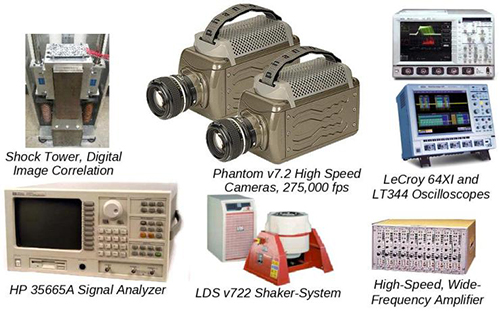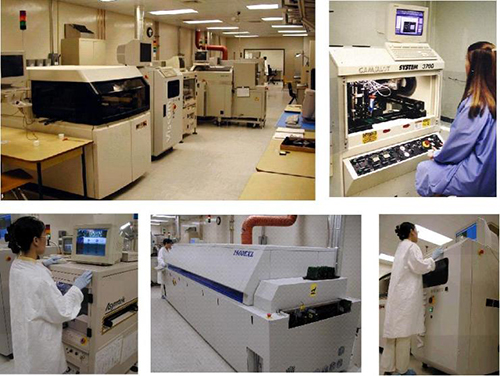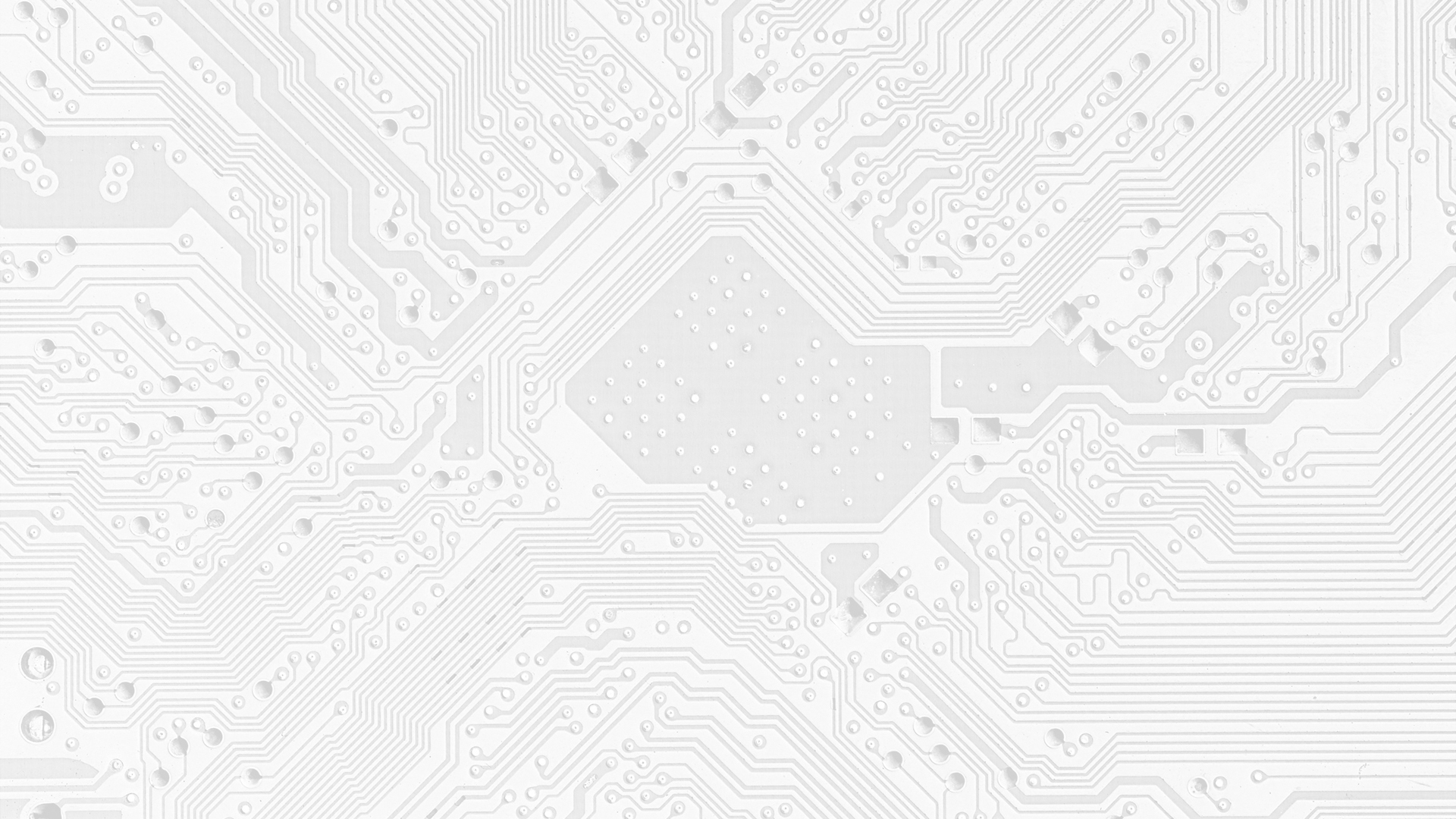Facilities
Auburn University has a demonstrated research focus on electronics reliability. CAVE3 utilizes a full assortment of additive printed electronics spanning a number of key pieces of equipment procured to augment the already formidable set of tools. Additional tools include SUSS MicroTEC PixDro LP50 Inkjet Printer, nScrypt 3Dn-300 Direct Write Quad-Head Printer, Xenon X-1100 Photo-sintering System with Flatbed Capability, and Lamination Encapsulation for FHE. Extreme Environment experimental research capabilities include several laboratories including a surface-mount assembly line. It is believed that these facilities are among the best available at any university in the nation in the areas of electronic assembly, packaging, and reliability. A description of these and other facilities is given below.
Additive Printed Flexible Hybrid Electronics (FHE)
SUSS MicroTEC PixDro LP50 Inkjet Printer
The PiXDRO LP50 is a desktop R&D inkjet printer and is designed for research and development of inkjet processes, applications, and the evaluation and development of inkjet materials. The printer is designed for a wide range of applications such as semiconductor packaging, PCBs, printed electronics, photovoltaics, displays, and for biomedical purposes.
nScrypt 3Dn-300 Direct Write Quad-Head Printer
The 3Dn Series Factory in a Tool is a high-speed platform for 3D manufacturing products and contains automatic tool changes, a palette of more than 10,000 materials, and post-processing options. This digital manufacturing system can go from CAD to a completely finished electronic product utilizing automatic tool changes to 3D print and house a structure with the extrusion tool head. The printer is a Tabletop Model that operates on a precision ball screw motion platform and is capable of microdispensing; high-precision 3D printing; micro-milling, drilling, and polishing; and pick and place.
Xenon X-1100 Photo-Sintering System with Flatbed Capacity
The X-1100 system possesses the latest advances in Pulse Light technology. It provides researchers with photonic technology to produce high-intensity light that can be used in a large variety of new applications. Features of the X-1100 include a benchtop design, high-intensity light containing up to 9 Joules of radiant energy, and multiple user screens. Additionally, the system offers a wide spectrum of light (deep ultraviolet, visible, and far infrared) and its benchtop design also allows the X-1100 to connect to voltages from 90 to 250 Vrms.
Lamination Encapsulation for FHE
The Lamination Encapsulation machine provides protective coating on the flexible hybrid electronics (FHE). Encapsulated items are completely waterproof whereas their laminated counterparts are not fully covered. The machine is built from substantial metal parts and its high-powered motor can successfully process heavy duty FHE.
Modeling and Simulations Tools
The laboratory has a full suite of computer-aided design, and high-end simulation tools. Computer-aided design tools include Pro-Engineer and Solid Edge. Simulation tools include, ANSYS, LS-DYNA, ABAQUS, ABAQUS/Explicit, NASTRAN, and MATLAB. The laboratory is well equipped with dual-processor Pentium-class workstations, and Unix multi-processor compute server.
Transient Dynamics Laboratory
The laboratory is equipped with state-of-art facilities for measurement of high-speed, high strain rate transient dynamic events such as shock and vibration. Equipment includes, high speed data acquisition systems, Vision Research Phantom-Series high-speed camera capable of 275,000 fps, SAI 3D image tracking software for high-speed image analysis and measurement, oscilloscopes, HP Spectrum Analyzers, vishay instruments 2311 high-speed wide-band strain-gage amplifier, motion-control drop tower, LDS v700 Series vibration system. Full-field strain measurement capabilities using digital image correlation. (Figure 1)

Design and Artwork
The laboratory has capability of complete set of electrical design and layout tools. Specific software and hardware includes, SUN Workstations and PCs, Complete Mentor Graphics Suite, ORCAD PWB Layout & Simulator, IntelliSuite MEMS CAD software, Lavenir, CAM View, AutoCAD, Optronics Film Master 2000 Laser Photoplotter
Surface Mount Assembly
This laboratory includes a state-of-the-art high volume surface mount assembly line capable of flip chip assembly, as well as other equipment for advanced electronics packaging including manual and automated wire bonders, encapsulant dispense systems, facilities for thick/thin film hybrid circuit fabrication on ceramic substrates, and a vacuum solder sealing system for MEMS and SiC packaging. The surface mount assembly line can be used for prototype creation, fabrication of test structures, development of manufacturing processes or new product launch platform. In addition, in-line inspection capabilities enable x-ray, acoustic and laser profilometry based inspections. In addition, the laboratory has semi-automatic placement machines and rework stations. Specific equipment includes, MPM AP Solder Paste Printer with Vision System, Agilent SP1 Solder Paste Inspection System, Asymtek Flux Jetting System, Siemens SIPLACE 80F5 Pick and Place Machine, VISCOM VPS 6053 Automated Optical Inspection System, Heller 1800 Solder Reflow Conveyer Oven with Nitrogen Capability, Slim-KIC 2000 Thermal Profiling System, CAM/ALOT 3700 Encapsulant Dispense System (Figure 2)

Electronic Packaging
Air Vac DRS24 Solder Rework Station, Semiconductor Equipment Corporation 4150 Split Optics Alignment System for Die Placement, Karl Suss Thermocompression Flip Chip Bonder, Yield Engineering YES-R3 Plasma Etch System, Palomar Products Model 2460-V Automatic Thermosonic Wire Bonder, K & S Model 2071 VFP Automatic Wedge Bonder, Asymtek Model 402 Dispensing System, Fisher Scientific Programmable Cure Oven, ATV Model PEO 601 Programmable Brazing Furnace, SST 3150 Vacuum Sealing Furnace. The assembly and packaging resources are supported by inspection and failure analysis equipment including a Phoenix micro-focus x-ray system, Sonix C-mode scanning acoustic microscopy (CSAM) system, WYCO wafer inspection system, Tencor surface profilometer, Brookfield viscometer, Dage PC2400 pull and shear tester, and optical and scanning electron microscopes.
